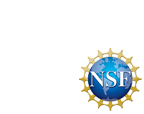 In 2007, Harvey Seifter, along with artist/scientist Todd Siler and choreographer Liz Lerman, led an NSF symposium on the relationship between the arts, STEM learning and workforce development in 2007. In 2008, Seifter and colleagues at New York’s Learning Worlds Institute held a series of roundtables with science educators, which revealed a broadly shared belief in the connection between the investigative nature of science and the arts, and an appreciation for the potential of ABL to foster passion for exploration and discovery in young learners.
In 2007, Harvey Seifter, along with artist/scientist Todd Siler and choreographer Liz Lerman, led an NSF symposium on the relationship between the arts, STEM learning and workforce development in 2007. In 2008, Seifter and colleagues at New York’s Learning Worlds Institute held a series of roundtables with science educators, which revealed a broadly shared belief in the connection between the investigative nature of science and the arts, and an appreciation for the potential of ABL to foster passion for exploration and discovery in young learners.
These meetings played an important role in designing a project which was subsequently funded by the National Science Foundation. In 2011, Phase 1 of the project convened 425 science educators, teaching artists, museum professionals, classroom teachers, business leaders, policymakers, and academic researchers in NSF-funded regional conferences at the Smithsonian Institution, Illinois Institute of Technology and California Institute of Telecommunications and Information Technology (Calit2). The goals were to explore the connection between the arts, innovation and economic competitiveness; create communities of practice by sharing educational resources, curricula, and best practices that use ABL to strengthen STEM learning; and experience first-hand arts-based educational techniques that develop critical and collaborative thinkers for the STEM workforce.
The reports developed by Phase 1 conference participants, and the Institute for Learning Innovation’s Phase 1 Interim Evaluation Report, document a broad consensus that the thoughtful integration of ABL into science education has the potential to make the study of science more attractive and inspiring to students, enhance the scientific literacy of the American people, and strengthen creativity and innovation skills across the American workforce.
These developments suggested an important opportunity to use arts-based learning to spark innovation within the ISE field, and, more broadly, to advance vital national objectives in the realms of STEM learning and workforce development. The outcome of the conference was a second proposal to the National Science Foundation, which was funded in the fall of 2012.
Link to Phase 1 website.

